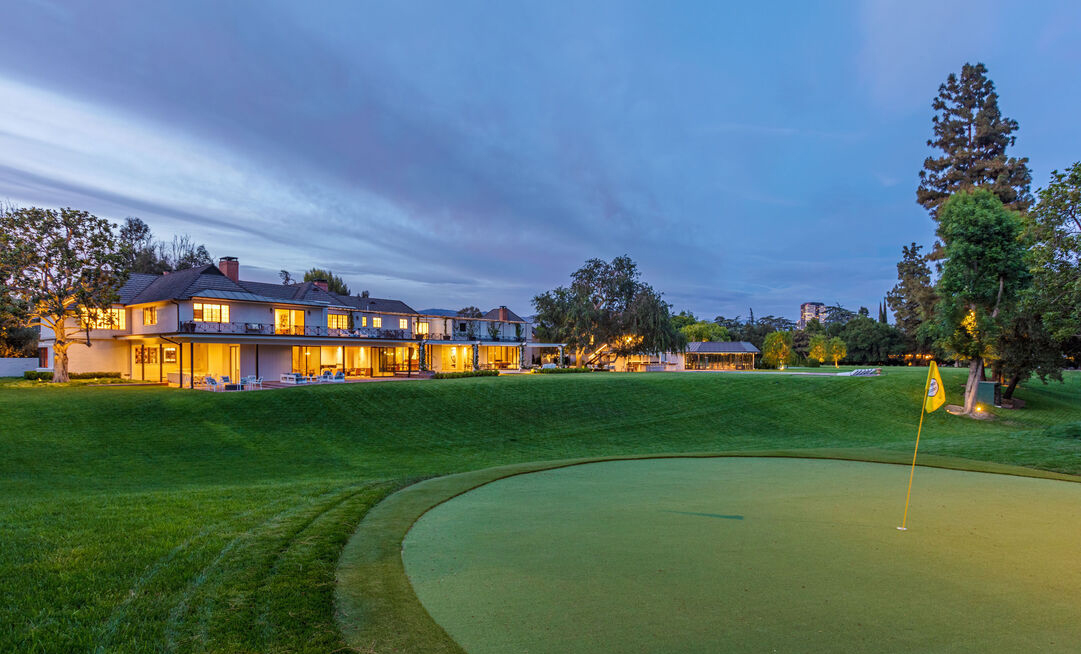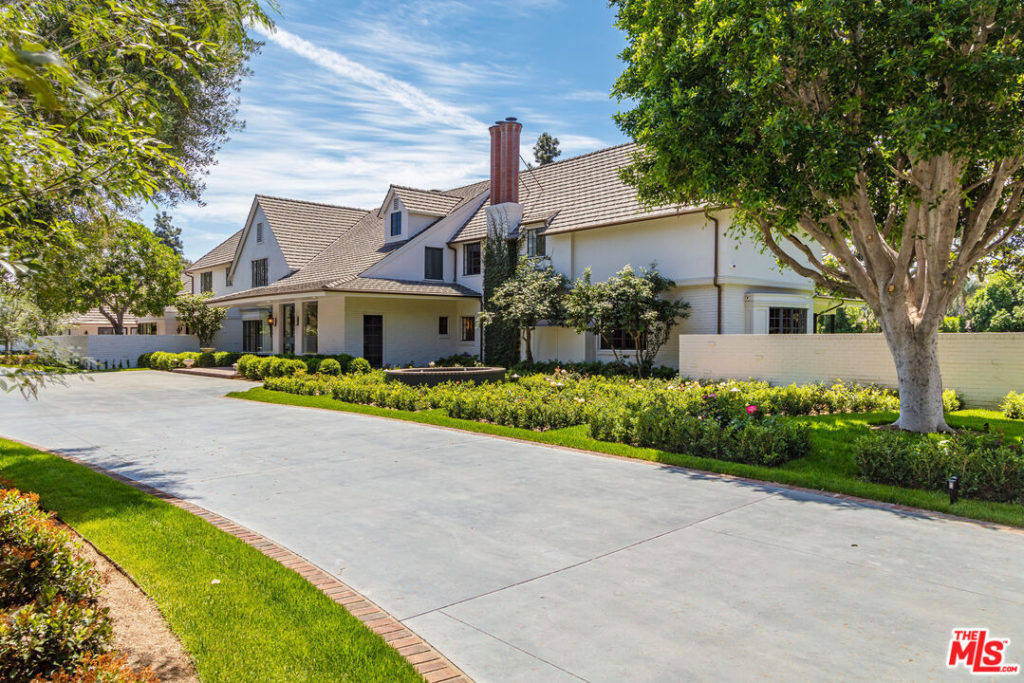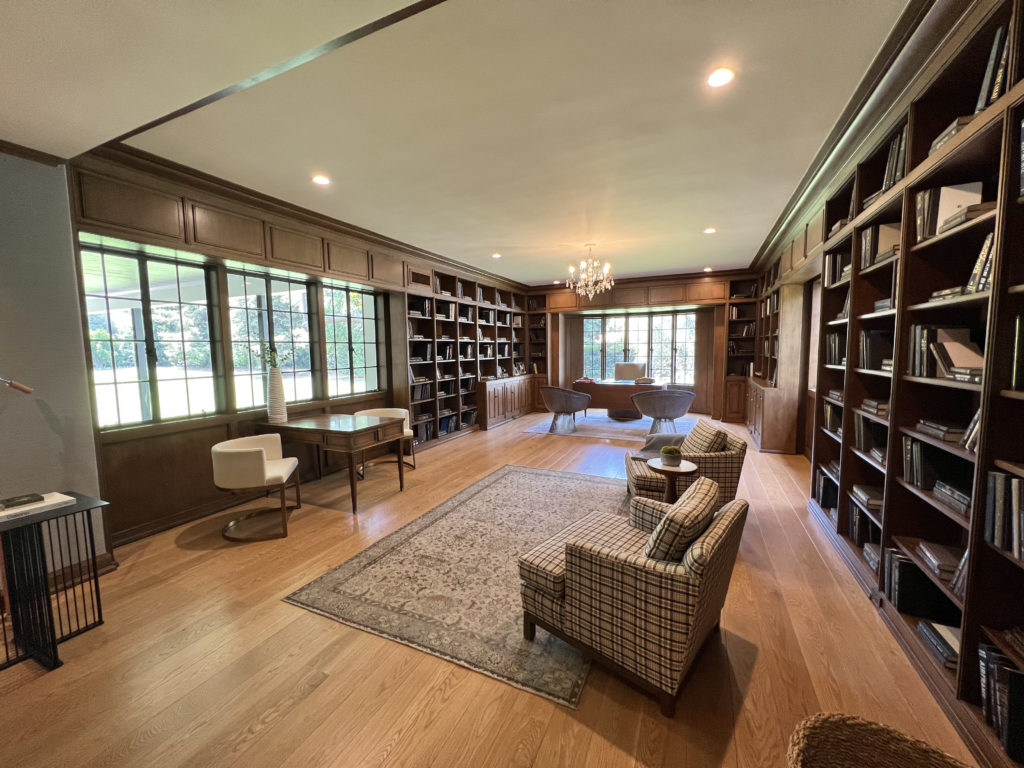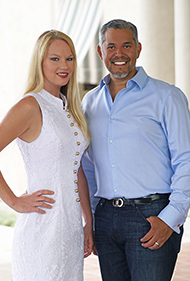
10346 Moorpark Street | Toluca Lake, California 91602
$29,000,000 | 10 Bedrooms | 17 Bathrooms | 5 Acre Lot
Take a full tour of The Hope Estate, narrated with background history
Hidden from the street behind dense privacy hedges, passing by you would never guess that the Hope estate occupies 5 acres, with a two-story main house of 15,000 square feet. Other structures on the expansive property include a two-bedroom guesthouse with staff quarters, a swimming pool, rose garden and one-hole putting green.
Bob Hope and his wife Dolores had their Toluca Lake home built in 1939 by Robert Finkelhor and it was updated two decades later by John Elgin Woolf, the Hollywood Regency-style architect who designed bold, opulent houses for other celebrities such as Cary Grant, Errol Flynn and Judy Garland. Richard Nixon’s helicopter once landed on the back lawn so the president could play a round at the nearby Lakeside Golf Club. Bob Hope was a member at Lakeside Golf Club, and was known to take a golf cart to and from his estate to the club, which was just a couple blocks away. In his later years, Bob Hope dined for lunch at the Lakeside pool deck almost every single day. When I was a teen in the late 90’s I had the privilege of meeting Bob Hope at the poolside when I was visiting with a friend at Lakeside. He was as kind and humble as you would imagine. This home was their sanctuary for 64 years until Bob Hope passed away in this estate at the age of 100, and until Dolores’ death 8 years later.
Bob Hope was a British-American Comedian born with the name Leslie Townes Hope in 1903 in the County of London, England. He was the fifth of seven sons of an English father and Welsh mother. The family immigrated to the US in 1908 when Hope was 5 years old, making their way through Ellis island and settling in Cleveland, Ohio.
Bob Hope was a British-American Comedian born with the name Leslie Townes Hope in 1903 in the County of London, England.
He was the fifth of seven sons of an English father and Welsh mother. The family immigrated to the US in 1908 when Hope was 5 years old, making their way through Ellis island and settling in Cleveland, Ohio. In 1929, after starting a career in show business in Vaudeville, Leslie Hope changed his name to Bob because he thought it sounded friendly and approachable.
Hope began appearing on radio and in films in 1934, starting with a radio career broadcasting mainly with NBC. Hope moved to Hollywood in 1938 when Paramount Pictures signed him for the film The Big Broadcast of 1938, also starring W. C. Fields. The song “Thanks for the Memory”, which you heard in the intro to this video, later became his trademark, and was introduced in the film as a duet with Shirley Ross. This front entrance foyer wasn’t original with the home. It was added on during the 1950’s expansion and remodel.

I love how you enter into the living room with those expansive windows looking onto that 5 acre lot. Lucille Ball and Jack Benny were known to drink and gossip at the holiday parties in this living room. Although the kitchen as been renovated with new cabinetry, countertops and appliances, the layout and windows are still original.
For the most part, the entirety of the home has been maintained with the same structural integrity, and with original surface materials in many parts of the home. The main changes you see are new light fixtures, and new finishings in the bathrooms and kitchens. This is the family room that was also used for recreation. Bob Hope would usually interview reporters at a table in this room. The fireplace mantel in the library was replaced, clad with dark marble which compliments that original woodwork. This room is stunning and one of the few parts of the house that still maintained the original 1939 traditional interior design.
The Bob Hope Estate is listed with Kevin Dees of The Agency

